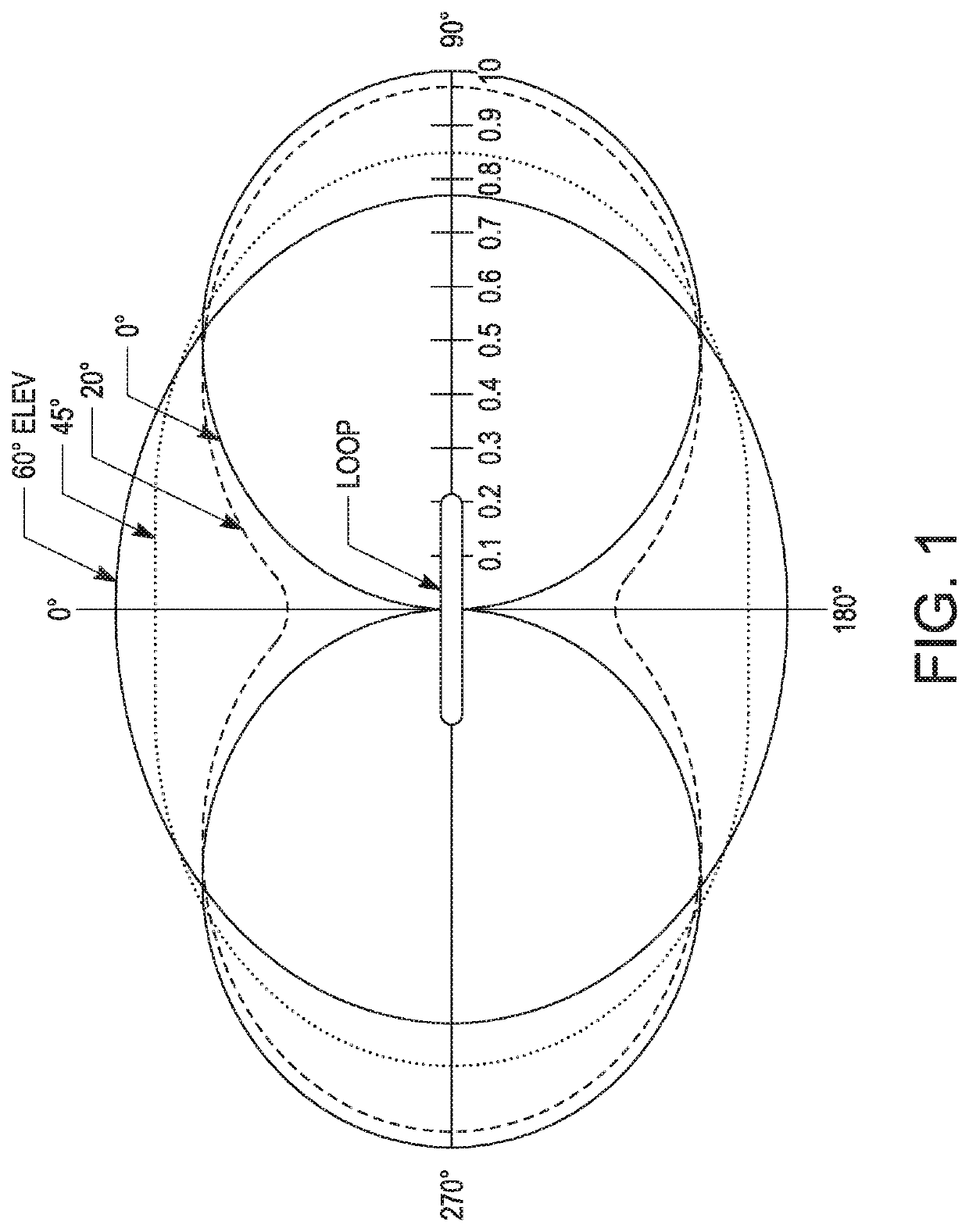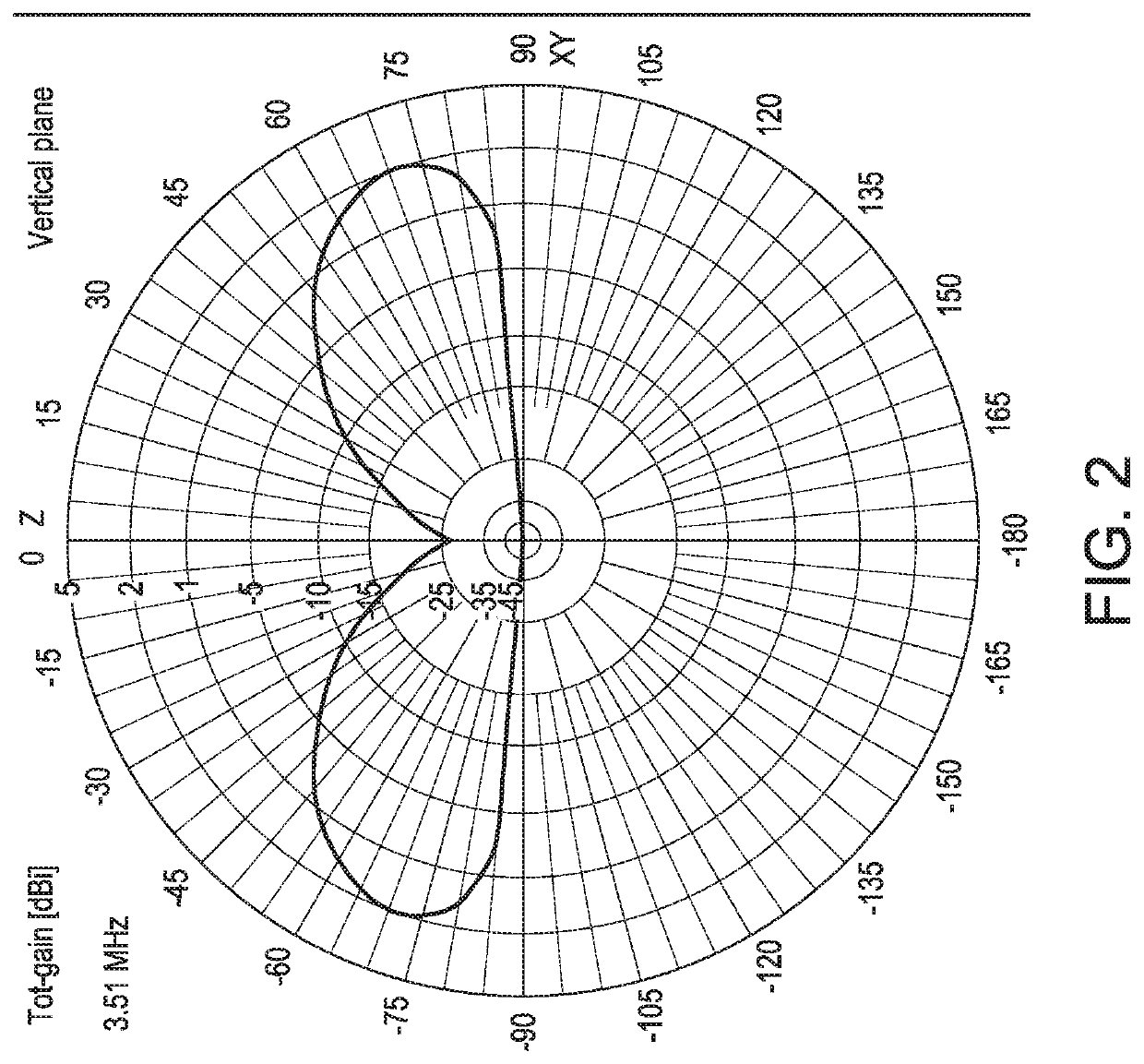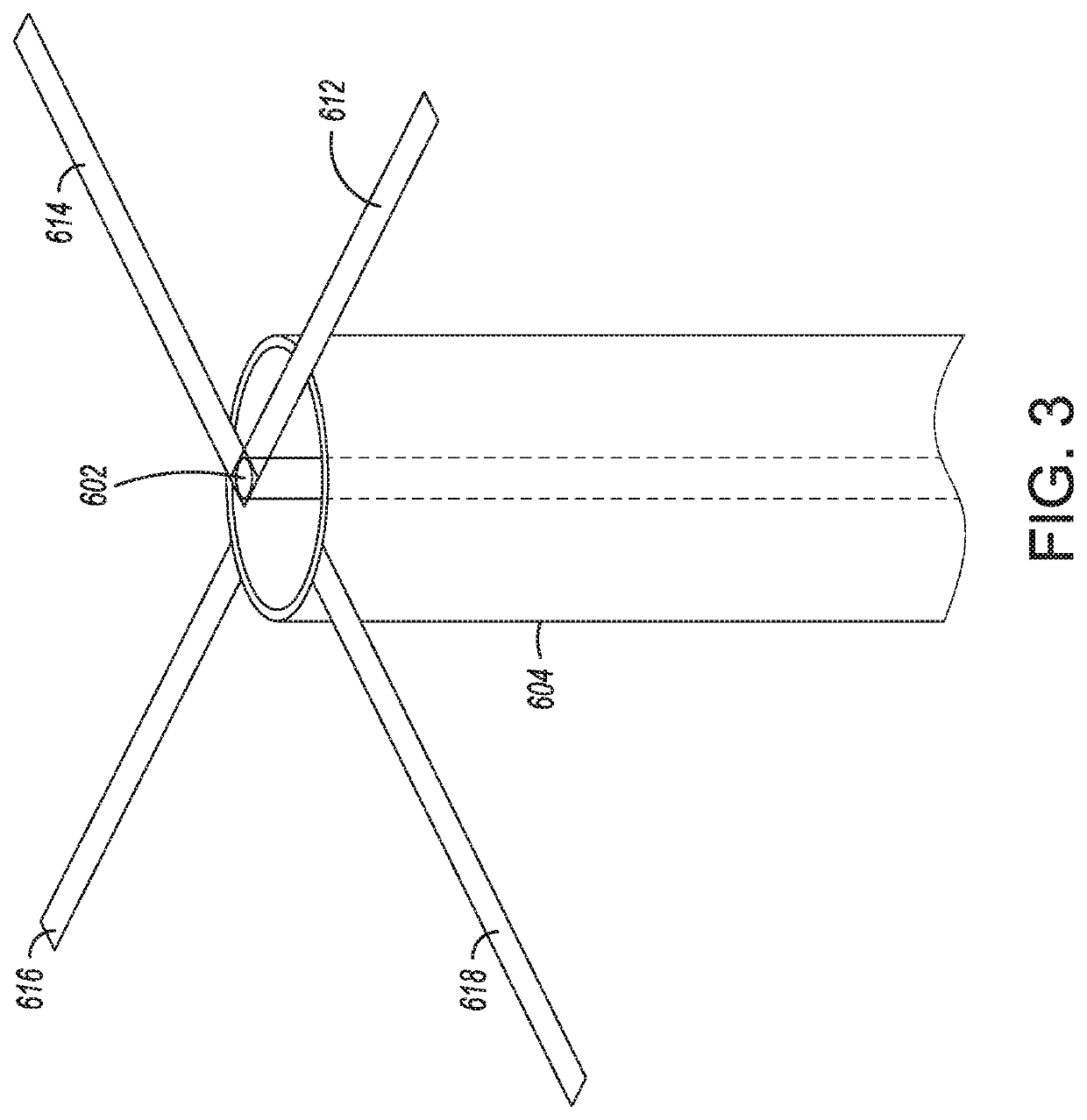Wideband GNSS antenna system
a global navigation satellite and receiver antenna technology, applied in the direction of resonant antennas, polarised antenna unit combinations, instruments, etc., can solve the problems of poor gain at the horizon, and achieve the effects of improving efficiency, low loss, and high efficiency
- Summary
- Abstract
- Description
- Claims
- Application Information
AI Technical Summary
Benefits of technology
Problems solved by technology
Method used
Image
Examples
Embodiment Construction
[0018]Referring to the drawings, FIG. 1 is a side view of a conventional loop antenna without a ground plane, having gain patterns associated with the antenna superimposed over the antenna. This generally illustrates the expected gain at various locations relative to the antenna. As shown, the highest gain of the loop antenna is in line with the plane of the loop (270 degrees and 90 degrees). As shown, the lowest gain of the loop antenna occurs at approximately 0 degrees and 180 degrees.
[0019]FIG. 2 shows the gain pattern of a conventional loop antenna with a ground plane. As shown in FIG. 2, the line passing through −90 degrees, the origin, and +90 degrees is referred to as the “horizon.” As shown, the loop antenna over a ground plane has null (0) gain directly over the horizon (from approximately −90 degrees to −85 degrees, and from approximately +85 degrees to +90 degrees), but is still optimized (providing high gain) at low angles (approximately −75 degrees to −45 degrees, and +...
PUM
 Login to View More
Login to View More Abstract
Description
Claims
Application Information
 Login to View More
Login to View More - R&D
- Intellectual Property
- Life Sciences
- Materials
- Tech Scout
- Unparalleled Data Quality
- Higher Quality Content
- 60% Fewer Hallucinations
Browse by: Latest US Patents, China's latest patents, Technical Efficacy Thesaurus, Application Domain, Technology Topic, Popular Technical Reports.
© 2025 PatSnap. All rights reserved.Legal|Privacy policy|Modern Slavery Act Transparency Statement|Sitemap|About US| Contact US: help@patsnap.com



